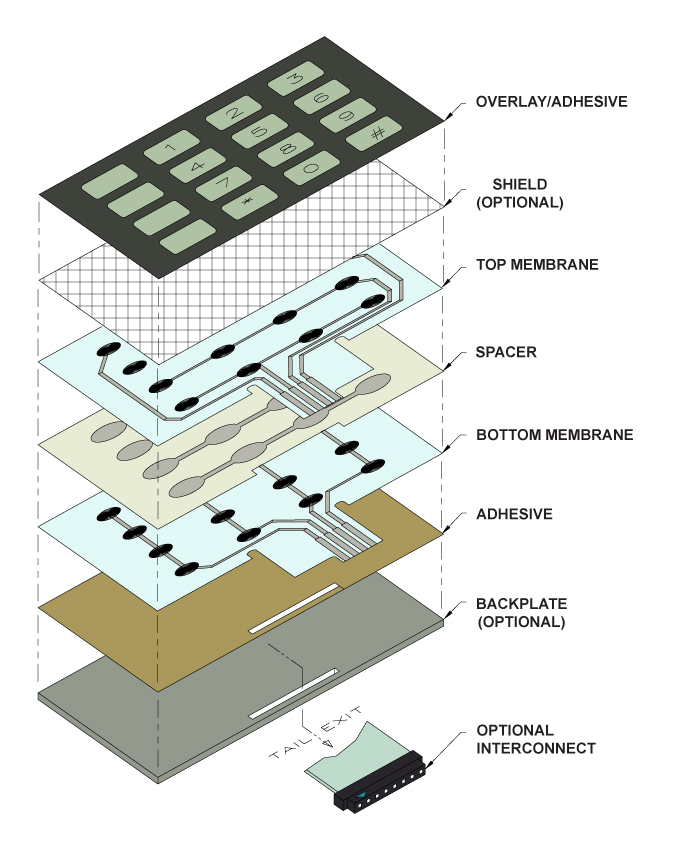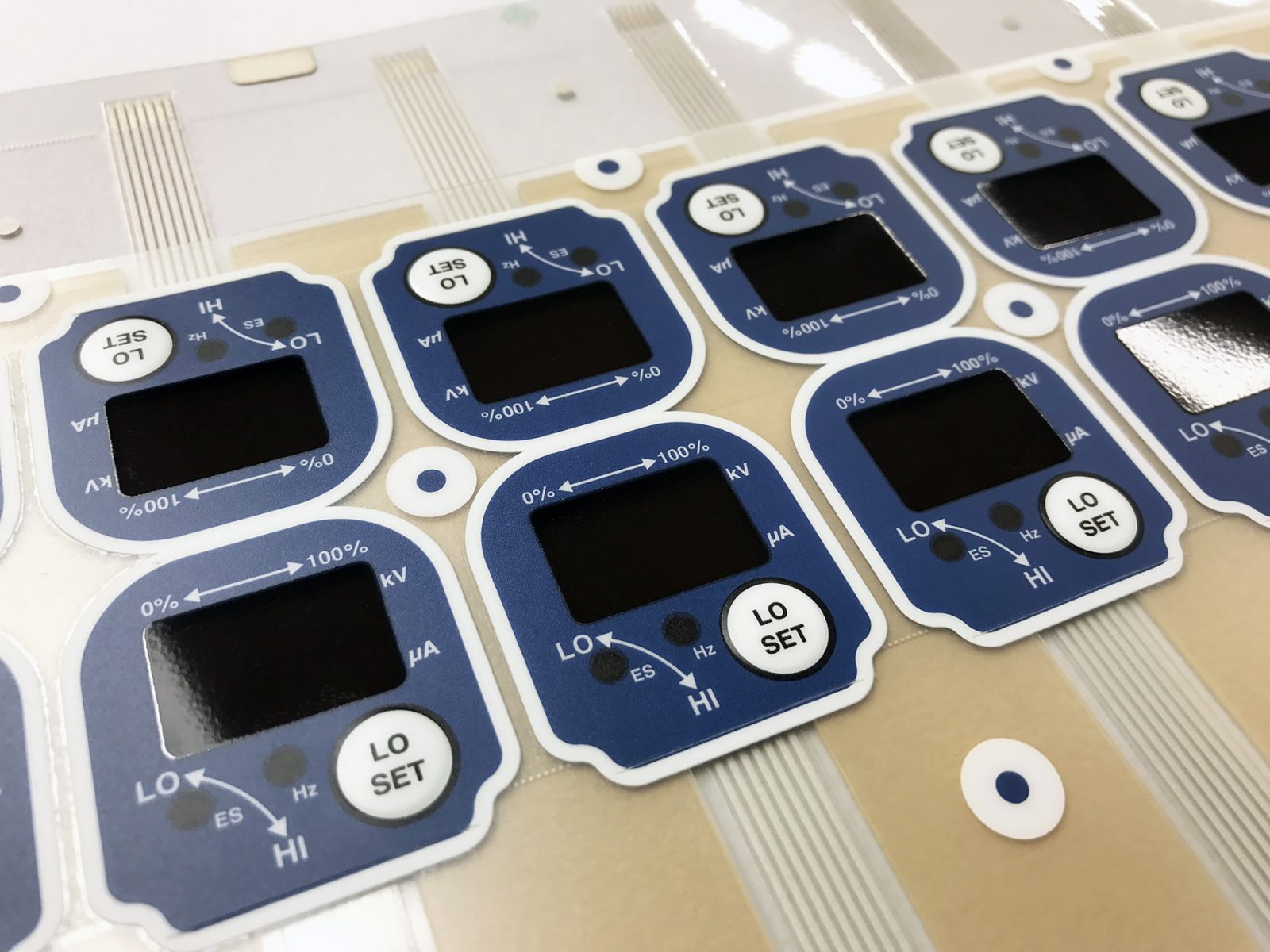Understanding the Functionality of Membrane Layer Changes for Interface Gadget
The functionality of membrane switches over represents a considerable improvement in customer interface design, combining performance with visual flexibility. As sectors increasingly prioritize individual experience, recognizing the nuances of membrane layer button modern technology becomes necessary.
What Are Membrane Layer Switches?
Membrane switches are innovative interface gadgets that assist in individual interaction with digital devices. These functional elements contain numerous layers, consisting of a visuals overlay, spacer, and a published circuit layer. The layout enables a seamless combination right into different digital devices, improving both the aesthetic and functional aspects of interface.
Membrane buttons are frequently used in a variety of applications, from house devices to commercial machinery and medical tools. Their building and construction commonly includes a thin profile, making them an ideal choice for portable designs. The responsive responses supplied by these switches can be engineered to fulfill certain user choices, making certain reliable communication between the customer and the gadget.
Longevity is an additional substantial advantage of membrane layer buttons, as they are resistant to dirt, wetness, and chemicals, which improves their life-span in requiring atmospheres. Additionally, these switches can be personalized in regards to form, size, and visuals style, enabling branding and user-specific attributes. Generally, membrane switches stand for a useful remedy for improving user experience in electronic devices, integrating functionality with visual appeal in a reliable way.
Just How Membrane Switches Over Job
Operating on a simple principle, membrane switches use a split construction to sign up user input successfully. Each button includes several layers, consisting of a published circuit layer, a spacer layer, and a top visuals layer, which are designed to collaborate perfectly. When a customer presses the top layer, it presses the spacer layer, bringing the conductive components of the circuit layer into contact with each various other.
This contact produces a shut circuit, signifying the gadget to implement a particular feature. The layout allows for different arrangements, consisting of responsive feedback, which can improve the customer experience by providing a physical sensation upon activation. The materials used in membrane switches often include versatile substratums, such as polyester or polycarbonate, which make certain resilience and strength versus wear and tear.

Secret Advantages of Membrane Buttons

An additional substantial advantage is their density. Membrane layer buttons are slim and lightweight, which enables producers to save space in their gadgets without compromising capability. This feature is particularly valuable in applications where weight and quantity are essential factors to consider.
Additionally, membrane layer buttons are immune to dirt, moisture, and chemicals, enhancing their toughness. This resilience expands their lifespan and decreases the demand for constant replacements, causing price savings over time.
Furthermore, the tactile feedback offered by membrane layer switches can be optimized to boost individual interaction. They can consist of attributes such as increased buttons or distinct clicks, boosting use and individual experience.
Applications Across Industries
Interface gadgets using membrane buttons prevail in a vast selection of markets, showcasing their versatility and functionality. Membrane Switch. In the medical market, membrane switches are important to devices such as diagnostic devices and person surveillance systems, where their continue reading this toughness and ease of cleansing are vital for maintaining hygiene requirements. Likewise, in the vehicle industry, these switches are employed in control panel controls and infomercial systems, providing a sleek and modern-day interface for users.
In addition, the customer electronic devices industry gain from membrane buttons in appliances and portable gadgets, where portable layout and user-friendly interfaces improve user experience. Industrial applications likewise utilize membrane layer switches for control board in machinery and automation systems, emphasizing their robustness and resistance to extreme atmospheres.
In the aerospace and defense sectors, membrane layer buttons are utilized in cockpit controls and equipment, where dependability and performance under extreme problems are vital. Furthermore, the pc gaming industry increasingly integrates membrane buttons in controllers and gallery machines, adding to an engaging customer experience. On the whole, the versatility of membrane layer changes enables their extensive use throughout countless industries, underscoring their relevance in modern customer interface layout.
Future Fads in Membrane Layer Switch Technology

Furthermore, making use of sophisticated products, such as polycarbonate and polyester movies, is expected to rise, supplying boosted toughness and resistance to ecological stress factors. These materials contribute to the general durability of membrane layer buttons, making them suitable for harsher commercial applications.
Moreover, the consolidation of wise modern technology, consisting of IoT connection, will certainly make it possible for membrane layer buttons to connect with various other tools and systems, facilitating a more interactive user experience. This trend aligns with the growing need for clever gadgets across numerous markets, from medical care to consumer electronics.
Lastly, modification choices are expected to expand, allowing suppliers to create bespoke solutions customized to particular individual requirements and preferences. These developments will certainly position membrane layer switches as vital elements in the development of individual interface innovation.
Final Thought
To conclude, membrane layer switches represent a critical innovation in user interface innovation, offering a reliable and flexible solution for varied electronic applications. Their split construction assists in small design, while functions such as responsive feedback visit homepage boost individual interaction. The durability against environmental elements further solidifies their energy throughout numerous sectors. As innovations in material scientific research and touch picking up technologies continue, the performance and applicability of membrane layer buttons are expected to broaden, strengthening their relevance in contemporary digital gadgets.